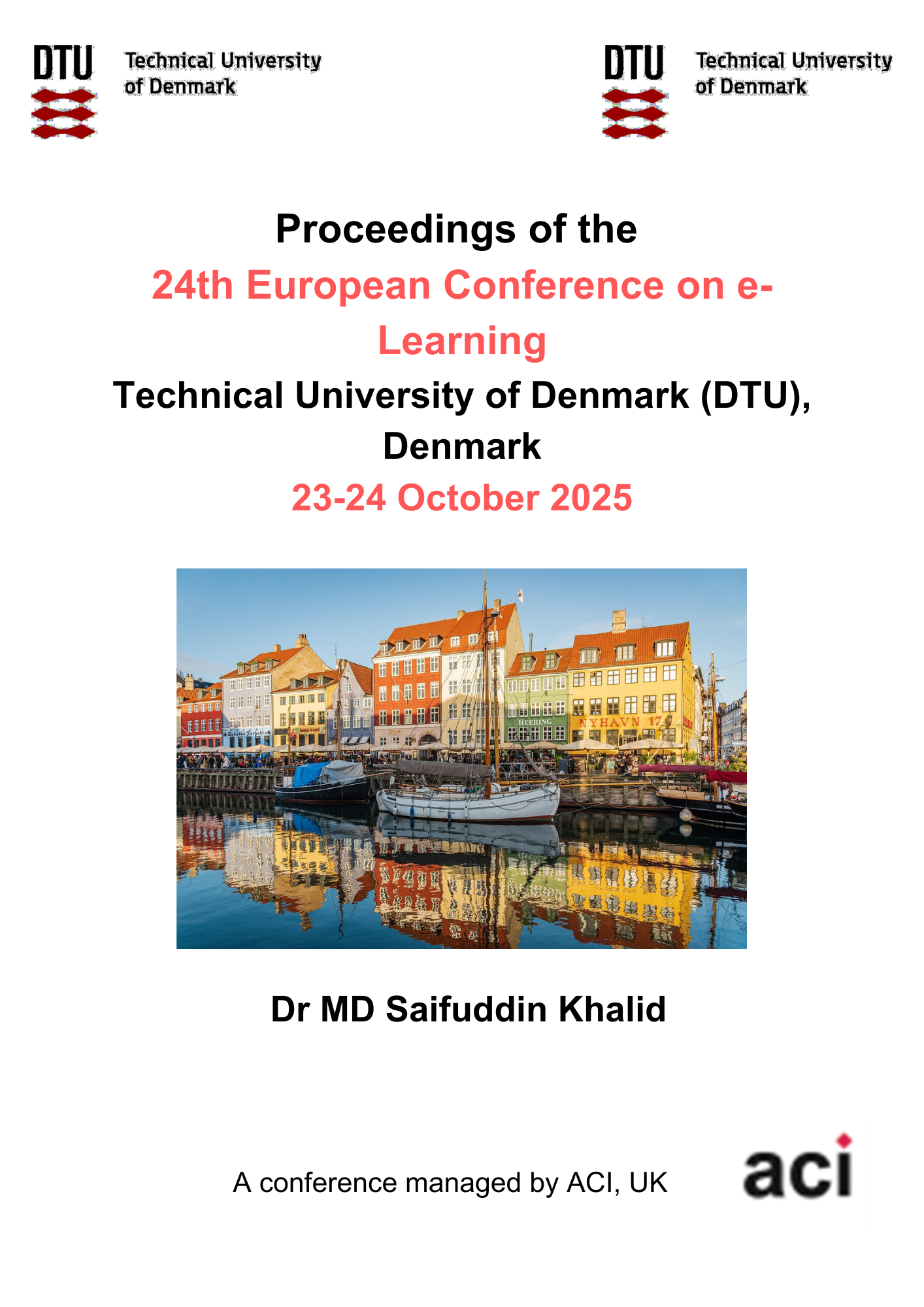Virtual Reality Experience for Digital Literacy: Identifying Extremist Symbolism in Social Media
DOI:
https://doi.org/10.34190/ecel.24.1.4194Keywords:
Virtual Reality, Digital Literacy, Hand-Tracking, User Engagement, Usability, Social MediaAbstract
This paper explores the development and usability of a hand-tracking-based Virtual Reality (VR) application designed to enhance digital literacy by teaching users to recognize extremist symbolism on social media. Given the increasing prevalence of covert extremist content online, immersive educational tools are essential to equip users with critical analytical skills. A mixed-methods usability study was conducted with 15 participants (average age 30; mostly male) evaluating general usability, immersion, engagement, interaction quality (especially related to hand-tracking) and acceptance of AI-generated voices. The VR application achieved a high usability rating (System Usability Scale score: 80.17). The perceived engagement and fun using the hand-tracking was shown to have a strong correlation with the perceived control of using the hand-tracking (r = 0.898, p < 0.001, regression analysis: β = 0.424, R² = 0.806), showcasing the need for intuitive and robust controls, as well as the importance of usability considerations. A notable finding was the unexpected negative correlation (r = −0.76, p= 0.00095, regression analysis: p = 0.001, β = −0.68 and −0.85, R² = 0.58) between the perceived quality of Artificial Intelligence (AI)-generated voices and motion sickness, suggesting that voice naturalness might either mitigate discomfort or that motion sickness could negatively affect voice perception. Qualitative feedback emphasized the importance of intuitive interactions, clear guidance, gesture precision and richer educational content. Additionally, users identified interaction consistency and detailed tutorial elements as important factors for a positive user experience.
The study concludes that well-designed VR applications using precise hand-tracking and clear instructions contribute effectively to an engaging and otherwise well received learning experience in the educational environment. Key areas for further research include the relationship between voice quality and motion sickness or general user comfort, long-term retention of digital literacy skills, as well as comparing the learning effects of a more expansive, rich environment with traditional teaching methods.
Keywords: Virtual Reality; Digital Literacy; Hand-Tracking; User Engagement; Usability; Social Media





